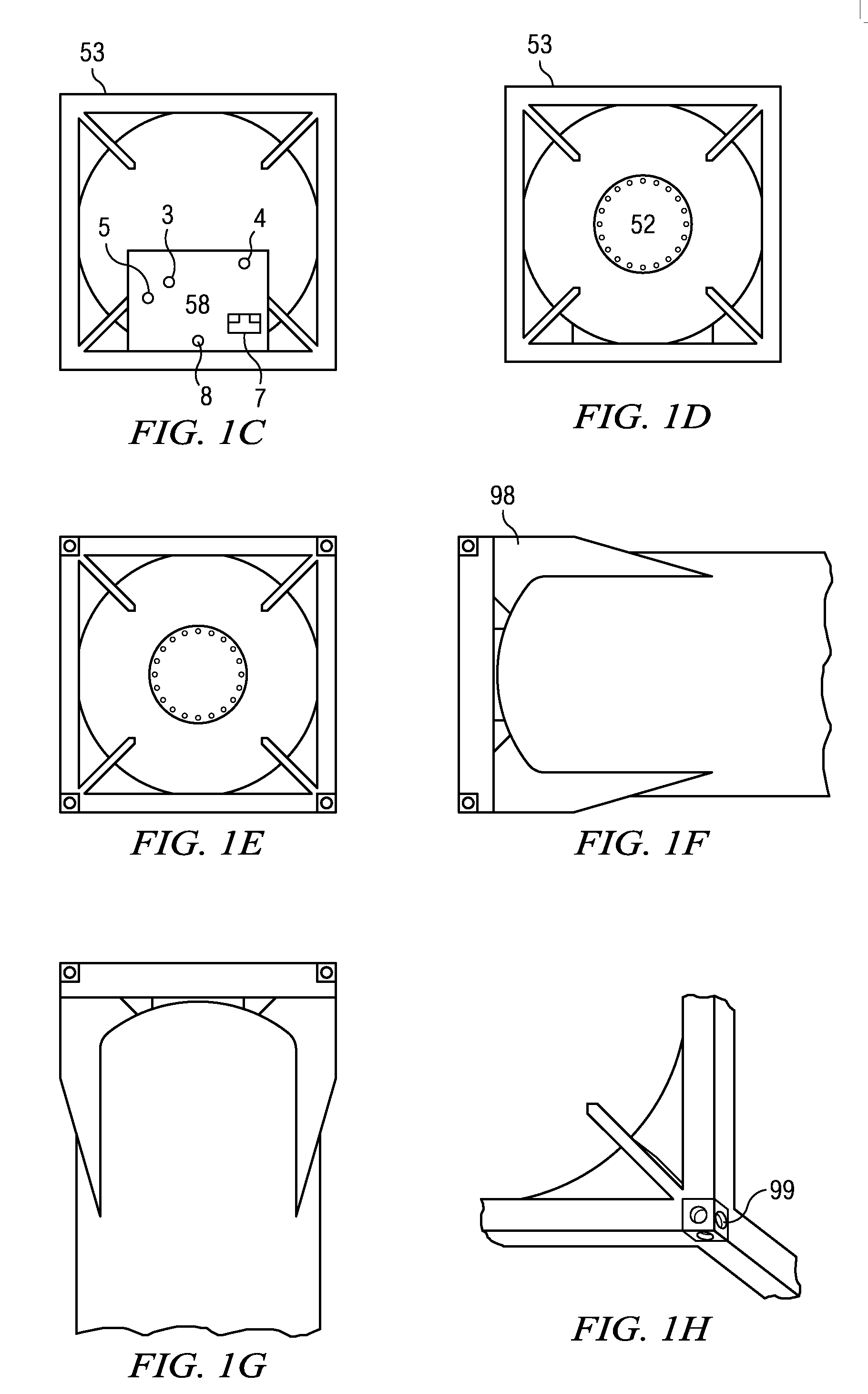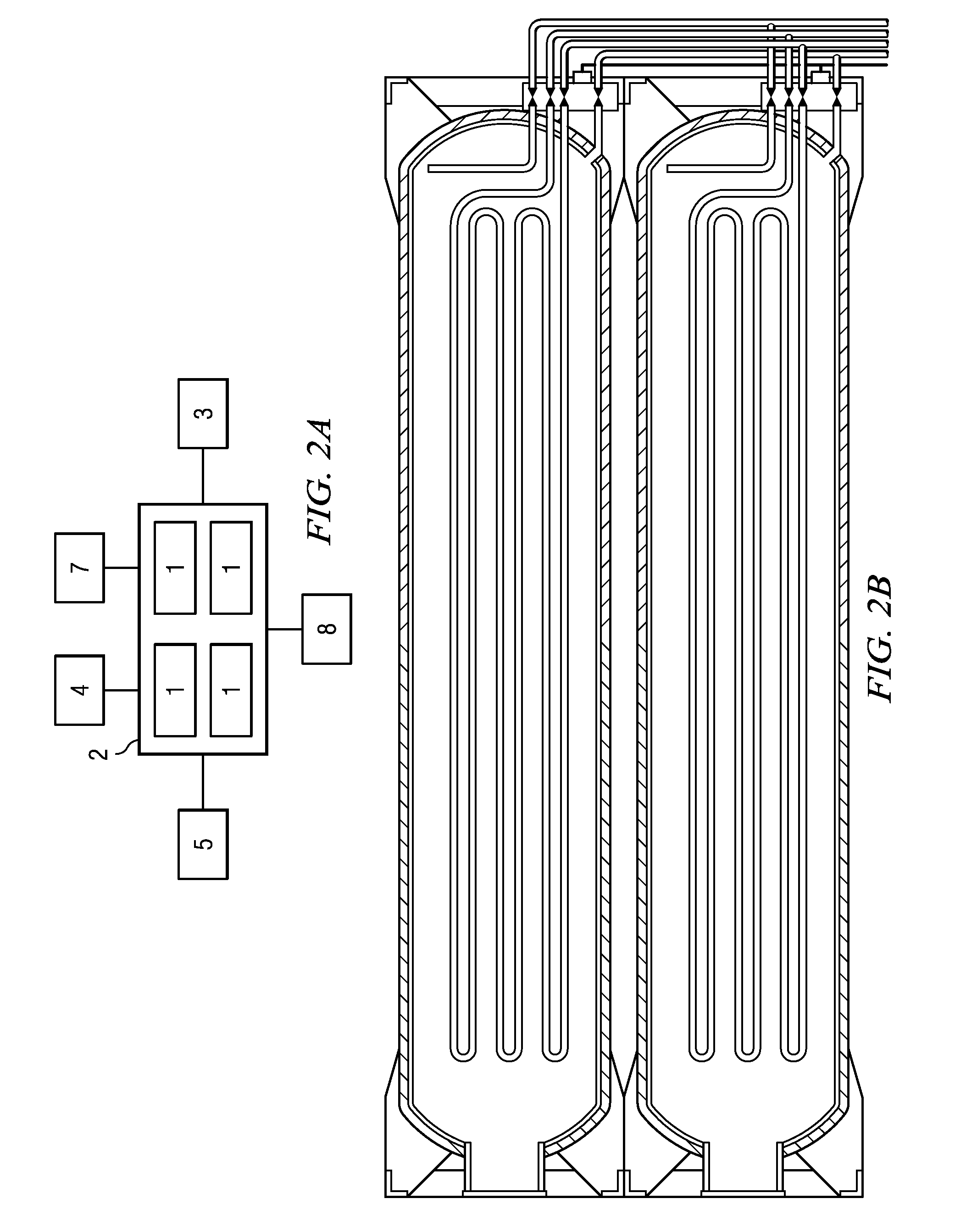The requirement for large custom engineered machinery is likely to make these systems prohibitively expensive for moderate to small-scale storage or transport operations.
However, the
system described by Rogers in DOE report DE-AC26-97FT33203 suffers from a number of deficiencies with regard to prospective commercial application.
A further limitation of the Rogers
system is the large amount of
thermal energy required for clathrate hydrate formation that is lost upon dissociation of the clathrate hydrate in order to re-produce the guest molecule.
Also, the Rogers demonstration
system does not address important requirements for a system that directly meets varying commercial needs for
cogeneration, cost, mobility,
operations management, permanence, safety, scale, serviceability, and thermal preservation and reuse.
As briefly detailed above, despite 50 or more years of effort, there have been many constraints to efficient, controlled formation of clathrate hydrates and, ultimately, to commercialization of systems based on clathrate hydrates.
However, pipelines as a universal means of moving
natural gas are limited by geographic, logistical, political, and territorial constraints.
Gas pipelines are costly to construct in open
terrain and prohibitively costly to construct in populated regions.
As such, today's U.S. pipeline system is far from optimized for efficient delivery of sufficient natural gas to meet demand, particularly at
peak demand periods.
The result has been increasing frequency of price spikes and a fear among commercial users that highly disruptive allocations of natural gas are inevitable in the near future.
Moreover, pipelines are highly vulnerable to
attack or disruption by other factors such as aging or earthquakes.
They are also limited in their ability to transport gas across
deep water because of prohibitive cost of construction, naturally occurring clathrate hydrate formation (which can plug the pipeline) and the difficulty of maintaining such structures.
Though economic for very large gas reserves (over 5 trillion cubic feet (TCF)) transported over long ocean distances, LNG has a number of drawbacks that have limited its application for shorter distance transport or for small to medium size gas reserves (under 5 TCF).
To date, the complexity and cost of LNG production systems has made LNG unsuitable for transportation of natural gas from offshore production facilities.
(Offshore production facilities frequently produce large amounts of gas with the oil where the gas cannot be brought to market and must be re-injected or flared).
Further, LNG is considered too expensive to be economic for transportation of natural gas for land-based applications where pipelines are not available or sufficient.
A further
disadvantage of LNG is its inherent volatility, which makes it a potentially attractive target for terrorists.
A recent report by Sandia Laboratories concluded that a maritime
attack on an LNG tanker could cause widespread and serious damage and injury within a 2,000-foot
radius.
One
disadvantage of CNG systems is the reliance on very strong and heavy steel “bottles” to store the pressurized gas.
These bottles are limited in
diameter and therefore require large numbers of valves and manifolds to control inflow and outflow of gas.
A small leak or failure has the potential to explosively release very large amounts of energy.
Yet another disadvantage of CNG systems is their very high cost per constant capacity for storage compared to LNG ships.
Another disadvantage of CNG systems is that the proposed CNG ships would be very heavy and are difficult to
dry dock for maintenance.
A further disadvantage of CNG is the difficulty associated with inspecting the pressure tanks (for cracks or other safety risks) and replacing them when there is a problem.
GTL production is essentially a
refinery process requiring complex systems, machinery and operational skills.
A major disadvantage of GTL technology is its complexity and high
capital cost.
Another disadvantage is the GTL process requires large amounts of expensive catalysts (large amounts because they are difficult to reactivate).
A further disadvantage of GTL systems is the high temperatures and pressures required for conversion.
While some GTL projects are underway in large reserve locations such as Trinidad and Qatar, the complexity of these systems has, so far, made them impractical for offshore and smaller scale applications.
GTL is impractical and non-economic for capture and transport of natural gas from smaller or offshore fields.
The disadvantages of the systems and approaches described above have led to the consideration of natural gas hydrates for natural gas transport.
The dissociation of SNG is an
endothermic process, meaning that large amounts of heat are required to release the gas stored.
CNG requires an enormous amount of costly and extremely heavy steel to contain the gas at extreme pressures.
LNG requires heavily insulated, costly and complex containment systems that can maintain integrity and function at cryogenic temperatures.
A disadvantage of SNG is its lower
compression ratio (155:1) compared to both LNG (600:1) and versus CNG (150:1 vs 200:1).The lower effective compression or density factor of SNG translates to a need for larger and / or more ships or containment vessels.
 Login to View More
Login to View More  Login to View More
Login to View More 


